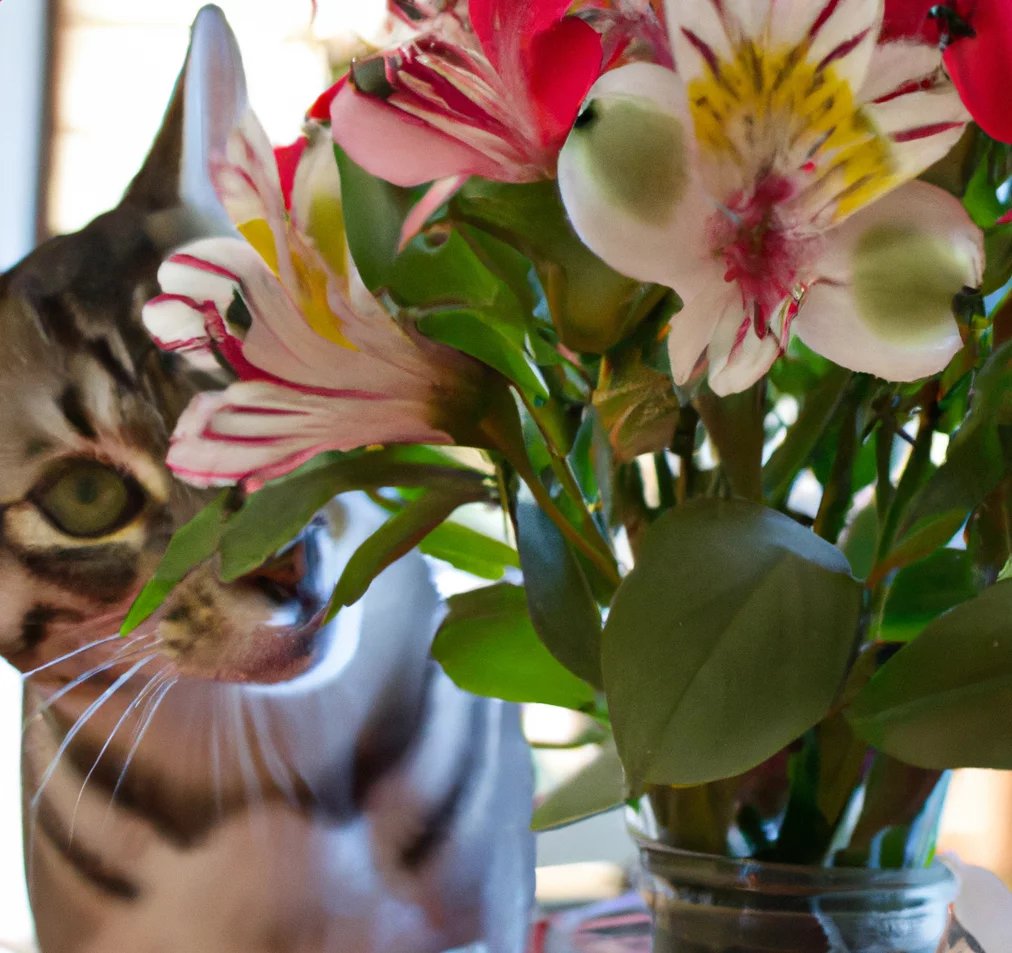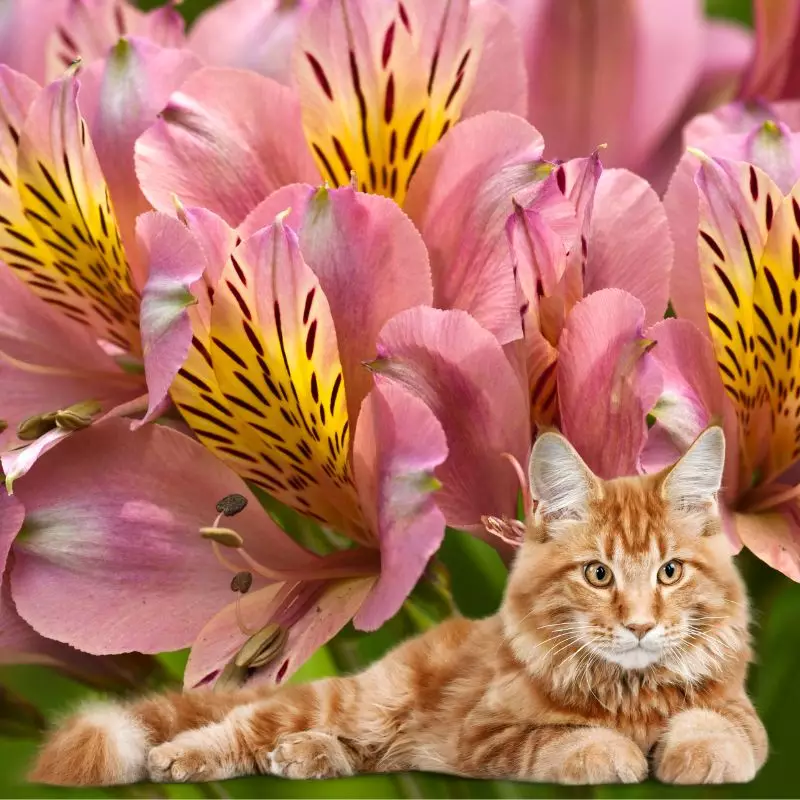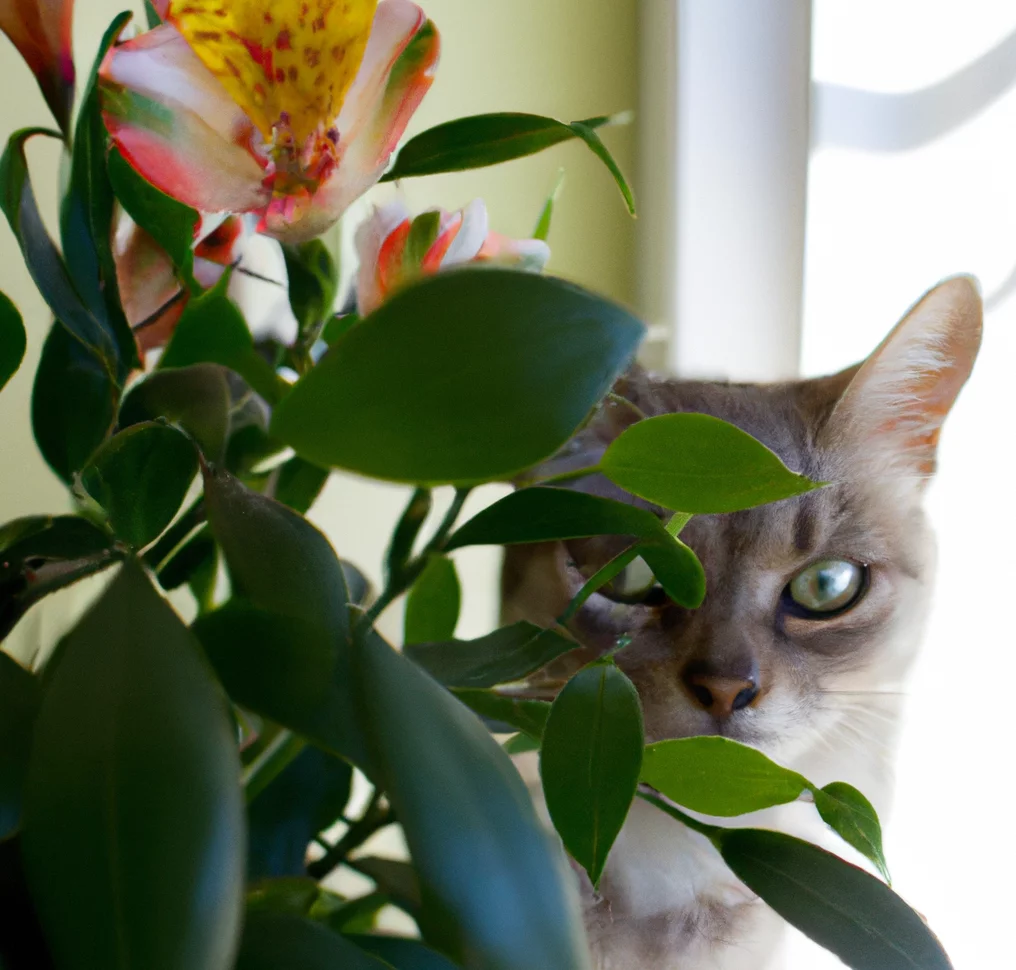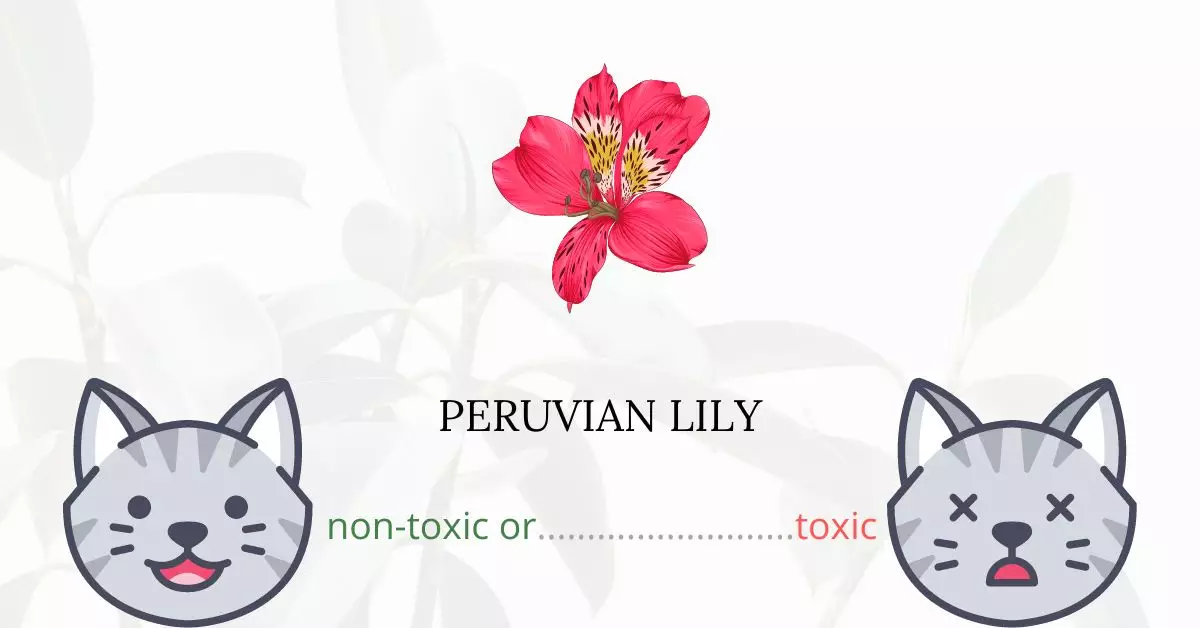Peruvian Lilies, also known as Lily of the Incas, are not toxic to cats.
Based on our collaborative research with a team of experienced DVMs (doctors of veterinary medicine), we can confirm that the Peruvian Lily does not contain poisonous elements that pose a threat to our feline companions. Our comprehensive analysis, which draws upon high-authority sources like ASPCA and PetMD, reinforces that it’s safe to grow Peruvian Lilies in a home inhabited by cats.
Nevertheless, always be cautious and monitor if your cat ingests any plant, including Peruvian Lilies, to ensure their overall well-being.
Can Cats Eat Peruvian Lily or Lily of the Incas?

Cats can eat a small portion of a Peruvian lily and not feel anything wrong. You should be concerned if your cat has eaten a generous amount of the plant. Whether it is a Peruvian lily or a different plant, cats should not eat excessive amounts of plants.
Felines are obligate carnivores, with stomachs incapable of metabolizing plant matter. Eating too many plants may cause indigestion and other symptoms such as vomiting and diarrhea. If this happens, don’t worry; the ailment will go away as soon as the plant materials are removed from the cat’s body.
What is a Peruvian Lily or Lily of the Incas?

Scientifically known as Alstroemeria, Peruvian lily is a flowering plant genus in the Alstroemeriaceae family. It is also commonly known as the Lily of the Incas. They are all South American natives, however, some species have naturalized in the United States, Mexico, and Australia.
Peruvian lilies develop from a clump of tubers. They send up both fertile and sterile stems, with some species’ fertile stems reaching 1.5 meters (4.9 feet) in height. The leaves alternately resupinate and are twisted on the petioles such that the undersides face up. The form of the leaves varies, and the blades have smooth edges.
Peruvian lily flowers can be solitary or in umbels. The flower has six petals, each measuring up to 5 centimeters (2.0 inches). They occur in a variety of red, orange, purple, green, and white hues, flecked, striped, and streaked with darker hues.
Keeping Cats Away From Peruvian Lily or Lily of the Incas

You may use repellent sprays to dissuade your cats from getting near your plants. There are a variety of highly scented items on the market that might cause your cat to sneeze if it goes too close, or you can manufacture your own using a common home ingredient.
A mixture of water and strongly fragrant scent (such as lavender or citrus) can work well, while a puree of garlic in water can be used for a similar but more pungent effect. You may also experiment with combining water with vinegar or citrus juices. Be cautious though with the ingredients you will use. Make sure to research well as some elements may affect your plants.
Plants to Avoid For Your Cats
If you are a cat owner and unsure if the plants growing in your yard are harmful to your cats, check out this list of toxic plants for cats. You can also check our list of non-toxic plants for cats.





